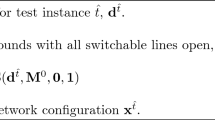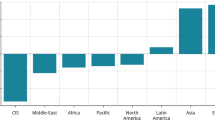Abstract
Power Systems all around the World faced in the last decade a large increase of penetration of power generation produced by Renewable Energy Sources, a large part of which (in particular wind generation and solar generation) is affected by high levels of uncertainty. Being Renewable Energy Sources only partially controllable all this uncertainty is transferred into Power System operation. Thus, numerical simulation of Power Systems needs to be able to cope with this uncertainty, that is Stochastic Programming techniques have to be considered. Anyway, numerical simulation of Power Systems also involves a very large number of variables, some of which are of integer nature: a large scale mixed integer stochastic problem has thus to be solved, but the requirement in computational power and time could reveal to be far too large. Thus, heuristic procedures must be introduced. In this paper it is introduced the sMTSIM model, based on a Stochastic continuous relaxation of the mixed integer Unit Commitment problem and on an heuristic procedure capable of re-introducing the mixed integer constraints.



Similar content being viewed by others
Notes
Actually, reservoir hydro power plants in Italy are thousands; thus we aggregated all the reservoirs located in the same zone and belonging to the same Company in one equivalent plant.
In this continuous formulation an overestimation of the reserve is possible: in fact, if unit’s status could be considered, unit \(g\) could never produce less than \(\underline{p}^G_g\); then, \(p^G_{g,t} \le \underline{p}^G_g\) could also mean that the unit should be turned off, in which case there would be no contribution to reserve; this mathematical trick contributes in reducing the error in the evaluation of reserve.
It is possible to define \(\underline{E}\) in many different ways; usually, \(\underline{E}=N_g \cdot \overline{p}^G_g\), with \(N_g\) an integer parameter defined by the user.
Constraint on reserve could not be met in case of lack of energy.
This profile can be one of the RES generation scenarios used in the Stochastic model as well as a completely new one.
It includes the generators that bid and compete to be dispatched to sell energy in the Italian day-ahead zonal electricity market. Production of generators having dispatching priority (such as renewable sources, CHP, other incentivized generation) is simply subtracted by the load.
References
Takriti, S., Birge, J.R., Long, E.: A stochastic model for the unit commitment problem. IEEE Trans. Power Syst. 11(3), 1497–1508 (1996)
Dentcheva, D., Römish, W.: Optimal power generation under uncertainty via Stochastic Programming. In: Marti, K., Kall, P. (eds.) Stochastic Programming Methods and Technical Applications. Lecture Notes in Economics and Mathematical Systems, pp. 22–56, Springer, Berlin (1998)
Padhy, N.P.: Unit Commitment—a bibliographical survey. IEEE Trans. Power Syst. 19(2), 1196–1205 (May 2004)
Carøe, C.C., Schultz, R.: A Two-Stage Stochastic Program for Unit Commitment Under Uncertainty in a Hydro-Thermal Power System, PREPRINT SC 98–11, KONRAD-ZUSE-ZENTRUM FUR INFORMATIONSTECHNIK (1998)
Parvania, M., Fotuhi-Firuzabad, M., Aminifar, F., Abiri-Jaromi, A.: Reliability-Constrained Unit Commitment using Stochastic Mixed Integer Programming, IEEE PMAPS 2010, June 14th–17th (2010)
Barth, R., Brand, H., Meibom, P., Weber, C.: A Stochastic Unit-commitment Model for the Evaluation of the Impacts of Integration of Large Amounts of Intermittent Wind Power, IEEE PMAPS 2006, June 11th–15th, Stockholm (2006)
Constantinescu, E.M., Zavala, V.M., Rocklin, M., Lee, S., Anitescu, M.: A computational framework for uncertainty quantification and Stochastic optimization in Unit Commitment with wind power generation. IEEE Trans. Power Syst. 26(1), 431–441 (Feb. 2011)
Restrepo, J.F., Galiana, F.D.: Assessing the yearly impact of wind power through a new hybrid deterministic/Stochastic Unit Commitment. IEEE Trans. Power Syst. 26(1), 401–410 (Feb. 2011)
Carrión, M., Arroyo, J.M.: A computationally efficient mixed-integer linear formulation for the Thermal Unit Commitment Problem. IEEE Trans. Power Syst. 21(3), 1371–1378 (Aug. 2006)
http://www.terna.it/default/Home/SISTEMA_ELETTRICO/mercato_elettrico/zone_di_mercato.aspx
Author information
Authors and Affiliations
Corresponding author
Rights and permissions
About this article
Cite this article
Siface, D., Vespucci, M.T. & Gelmini, A. Solution of the mixed integer large scale unit commitment problem by means of a continuous Stochastic linear programming model. Energy Syst 5, 269–284 (2014). https://doi.org/10.1007/s12667-013-0107-z
Received:
Accepted:
Published:
Issue Date:
DOI: https://doi.org/10.1007/s12667-013-0107-z




